06 Feb An Attempt: Camping in a Tarp Tent
How-To // An Attempt
An Attempt: Camping in a Tarp Tent
February 6, 2020
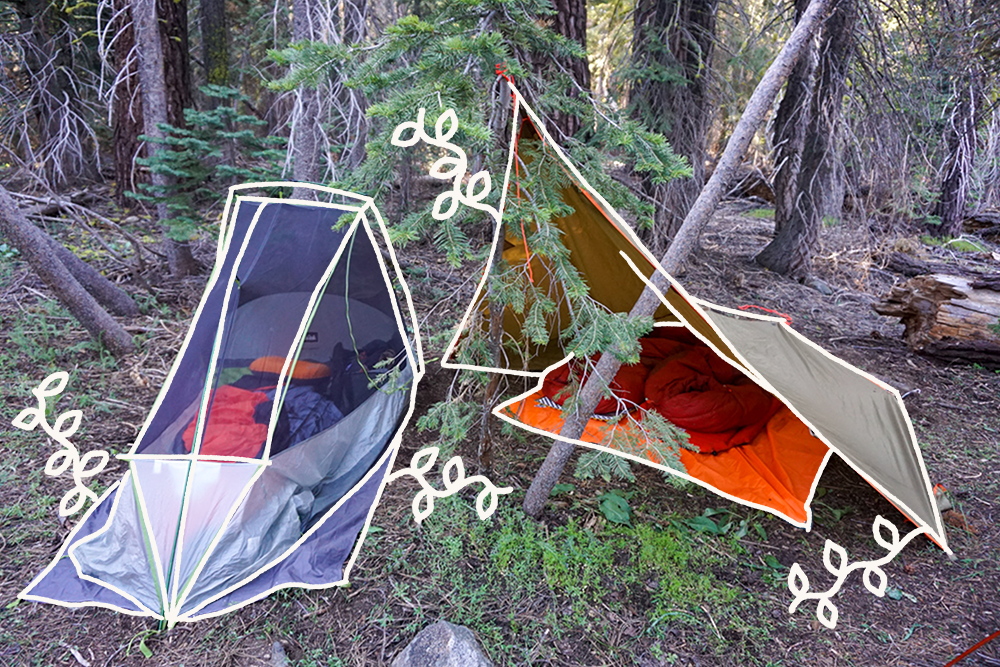
“An Attempt” is a new series I’m trying out, where I write about our experiences trying out new things in backpacking and camping. They’re either going to be new to us or just brand new to backpacking in general. If you have any ideas on what we should try next, leave a comment down below!
Up until we slept in a tarp tent for two nights in Yosemite, Dylan and I had never slept outside of the comfort of our tiny two-person backpacking tent. In fact, the closest we’d ever gotten to sleeping completely outside was accidentally dozing off in Joshua Tree National Park while star-gazing in our sleeping bags. That said, we wanted to give it a try and we also lent out all of our “real” tents to our friends on a big backpacking trip with the whole group. As we handed out our favorite shelters, we braced ourselves for the uncharted territory of tarp tent camping. If you’d like to read about the Yosemite adventure, I wrote a whole backpacking guide here.
For starters, a tarp tent is a tent that you build out of a tarp, a couple cords, and sticks or loose tree branches. Some people also use trekking poles to give their tents some structure, or they’ll tie corners of the tarp around tree trunks. From what I gathered from hours of research, there’s about two million ways to build a tarp tent. It’s basically origami in the woods with a floppy (and often wet) piece of fabric. The final product ranges from a sheet draped over a cord strung between two trees and one of those sturdy army barracks you see in movies when the infantry is on the move.
I also noticed that a lot of ultralight backpackers prefer tarping because the materials are lightweight and highly pack-able. Other than the ultra-lighters, the “true rugged outdoors people” also seem to like camping in a tarp tent because they feel more connected to nature. Which I get — there’s literally nothing between you and all the bugs, bears and squirrels of the forest.
Anyways, I’ll give you a preview of how our experiment went: One of the nights went spectacularly well and made me feel like an outdoor queen, while the other one reduced me to tears and made me want to pack up and backpack out in the middle of the night.
The Research
If you Google “how to camp in a tarp tent” you’ll find a whole world of resources to help you on your tarp tent journey. If you need some extra convincing, you can always read Hyperlite Mountain Gear’s 9 Reasons to Try Tarp Camping. If you just want a giant, comprehensive guide to tarp tenting, check out REI’s guide or this guide by The Hiking Adventure. I’ve also taken a second to sketch out some of our favorite and presumably most practical ways to set up a tarp tent.
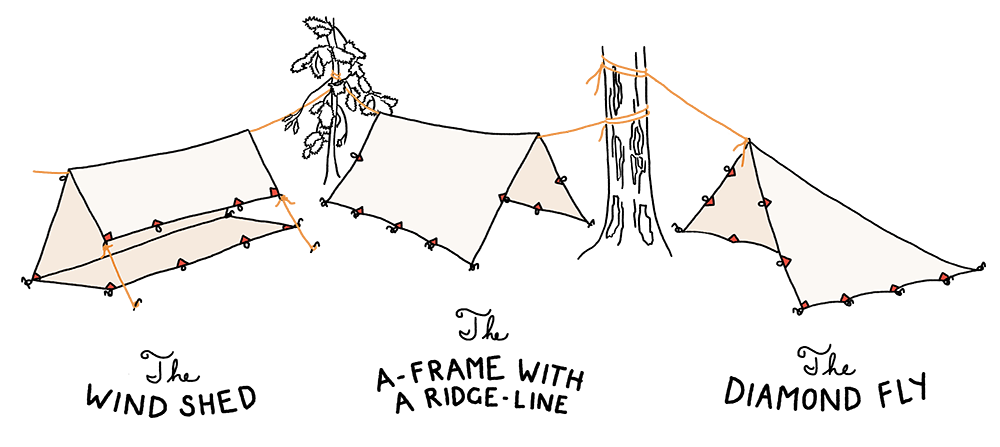
The Supplies
Tarp: We picked this 10 foot by 10 foot tarp. We specifically picked a tarp with lots of attachments along the edges so we could play around with our tent design. The tarp also came with guy-lines and a stuff sack for the tarp.
Ground tarp: Choosing a ground tarp was a lot more casual than choosing a tent tarp. We just picked something cheap and waterproof.
Cord: We used cord to tie the corner of our tent to a tree and to (attempt) to hold a trekking pole up. You can also use a cord to form the ridge of a ridge-line tent.
Guy-lines: Some tarps come with guy-lines complete with tensioners or cleats to make tent set up easier. If your tarp doesn’t have guide-lines, you can also buy loose ones and attach them along the edges of your tarp. We used the guy-lines that came with our tarp at the tarp corners where we staked our tent down.
Tent stakes: We just stole some tent stakes from our “normal” tent.
Trekking pole: We used one of my old trekking poles to (attempt to) hold up the top corner of a cornetto-style tent set-up. The trekking pole did fine but the soil underneath it would not hold the pole vertically AT ALL.
The Attempt
The whole backpacking trip was two nights so we had two opportunities to make this tarp situation work. Night one, we settled on a campsite out of desperation because our friends were exhausted and just wanted to stop walking. We chose a campsite near the Yosemite valley rim with a slightly obstructed views of the valley. While the views from the campsite were great and we had a lot of “camp furniture” boulders to sir on, the potential for a successful tarp experience was low.
There were four small plots where one could set up a tent and none of them had the types of trees or branches we needed to build our tent. To make things worse, we also ended up with the smallest plot because the others needed more space to set up their tents. We also had the bright idea of draping the tarp corners on the shrubbery around the tent, which helped absolutely nothing. I have no clue why we did that.
So, this is how our first attempt went: Our goal was to create a simple tent design where one of the ends was propped up by a trekking pole and the other ends were secured directly to the ground. In theory, it was pretty simple, but we absolutely could not get the trekking pole to stay up. No matter how hard we jammed it into the ground, the gravel-y dirt around the pole would go slack and the pole would wobble to the ground.
We ended up sleeping with the tarp loosely draped over us, without any supports to lift it off the ground. Condensation formed all over the inside of the tarp and dripped directly onto our faces. I scrunched all the way inside my sleeping bag just to get away from the dripping. I was also shocked by how exposed and vulnerable I felt sleeping in the open like that. I felt like at any second a squirrel would come scratch up my face. It was one of the worst nights I’ve ever spent in the backcountry. Of course the cherry on top was the fact that our friends were cozily sleeping in their tents while we struggled.
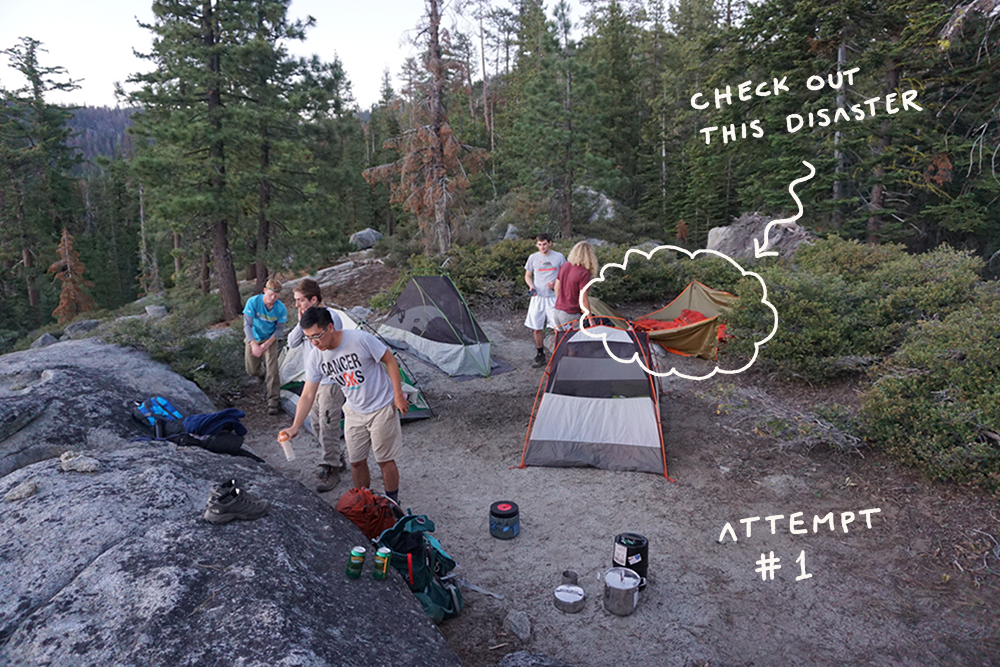
Attempt #1
The next morning, I was so close to requesting that I sleep in one of the tents that night, but Dylan reassured me that we’d try harder to build the tent this time.
For our second campsite, we made it a priority to find a site with at least one tree that could support a tarp tent. It helped that at this point in the hike, we were deeper into the forest so there were a lot of trees to choose from. We had also been going downhill most of the day so our friends were a lot more enthusiastic about hiking until we found a good spot.
We found the perfect spot right next to Snow Creek with all the trees we could need for a comfortable tarp set up. This time, we ditched the trekking pole and tied one of the tarp corners to a small tree like a diamond fly tent. Then we secured the other ends of the tarp straight to the ground. We noticed that everything worked better if we secured the first tarp corner as far up the tree as we could. Then we laid out a second tarp as the tent floor and packed all our stuff in. For some extra closure, we stole the rain fly off of our actual tent and secured it around the tarp tent entrance with some extra cord.
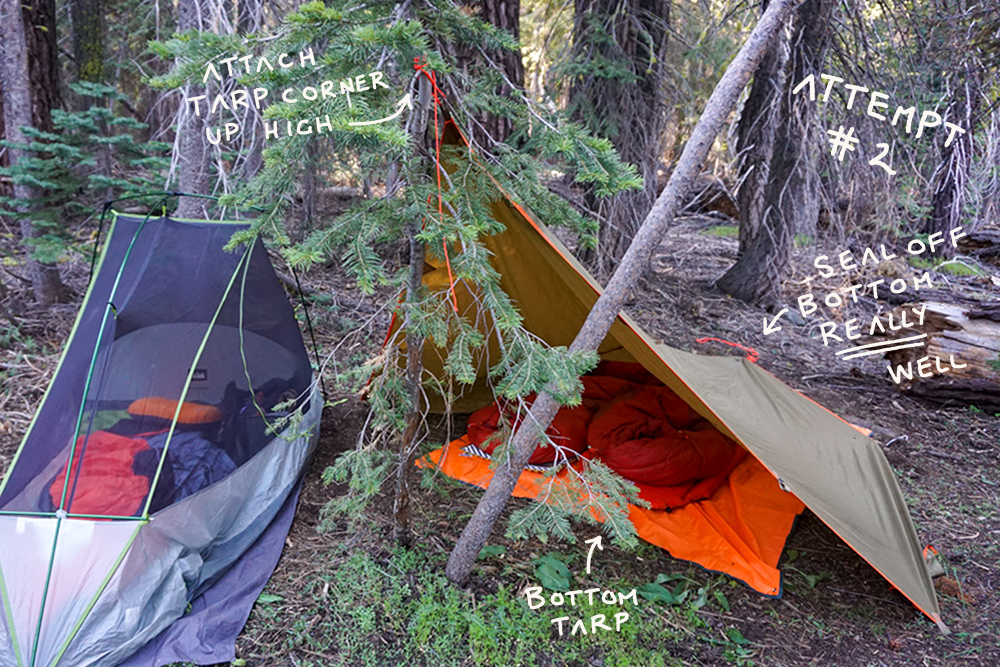
Attempt #2
We slept fantastically on the second night. The tarp tent was much larger than our normal backpacking tent, so we enjoyed being able to have our backpacks in the tent and being able to sleep fully stretched out. I also noticed that I felt a lot less exposed with the extra rain fly closing off the tent.
The Verdict
Even though I enjoyed that second night, I don’t think we’ll be camping with a tarp tent again anytime soon. For one, you have to find the perfect campsite with the perfect tree distribution in order to successfully build your tent. Alternatively, if there’s absolutely no trees, you have to at least find a campsite with sticky soil that will hold a trekking pole vertically for long periods of time.
Additionally, I hadn’t expected to miss the pockets and hooks inside our normal tent. We had to store everything in our backpacks or on the ground, which made it hard to stay organized. Finally, I didn’t like how exposed I felt without being zipped up like our normal tent.
If you do decide to try tarp tent camping for yourself, here are my take-always:
- Focus on picking a good spot with trees
- Use the simplest possible tarp tent design (we like the diamond fly)
- Use an extra tarp to seal off any openings in the tent while you sleep
- For your first time in a tarp tent, bring your normal tent in case the tarp tent experiment goes horribly
Have any funny stories or tips on how to camp in a tarp tent? Leave a comment down below!

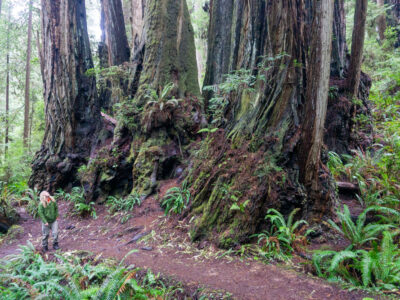
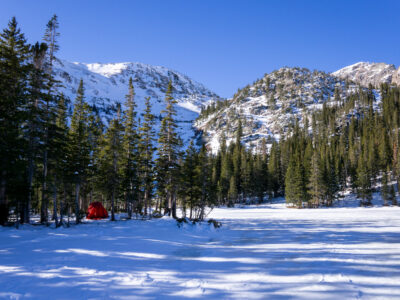
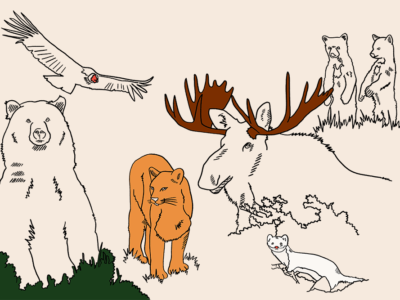
Leave a Reply